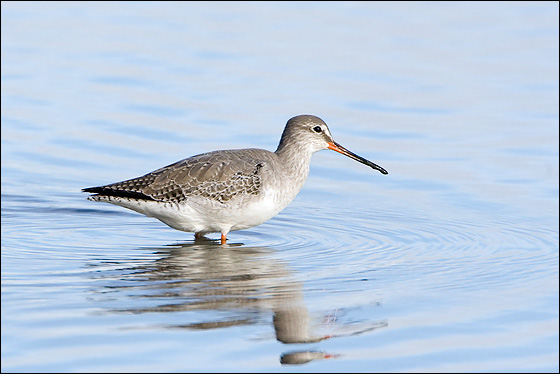Spotted Redshank (Tringa erythropus)
Taking in the detail, you might have noticed that female Spotted Redshanks only stay in the breeding areas for about six weeks. That is a light burden for any reproducing bird, and the females manage to work it by delegating most of the incubation and all the chick-rearing to the male – they simply lay the eggs, sit for a few incubating stints and take off. It’s quick, but it’s efficient, and there isn’t much of a pair-bond with the male to leave behind anyway.
Spotted Redshanks avoid competition with Common Redshanks by feeding in deeper water. They have longer legs and longer bills, and are better able to wade, swim or even up-end, like ducks, with head and neck submerged. They often feed socially, many individuals moving this way and that in an effort to panic and confuse shoals of small fish. At times they will also perform co-ordinated rushes, with many birds running abreast, bills half submerged in the water.

